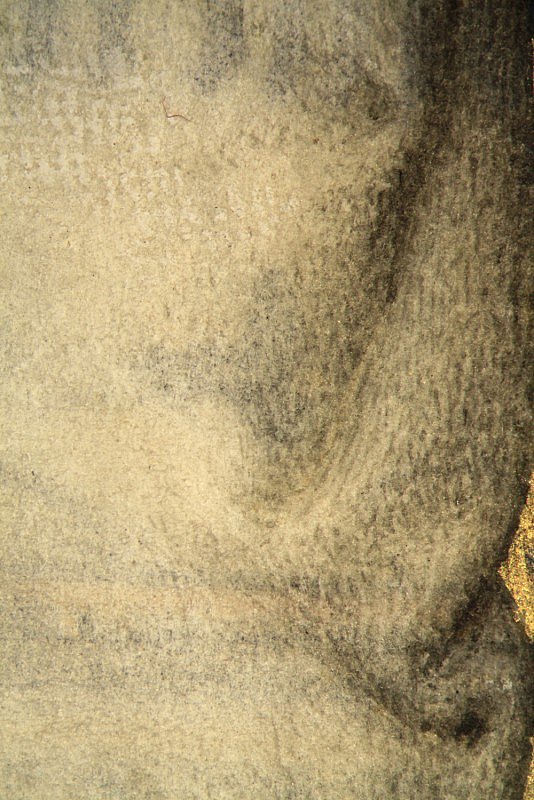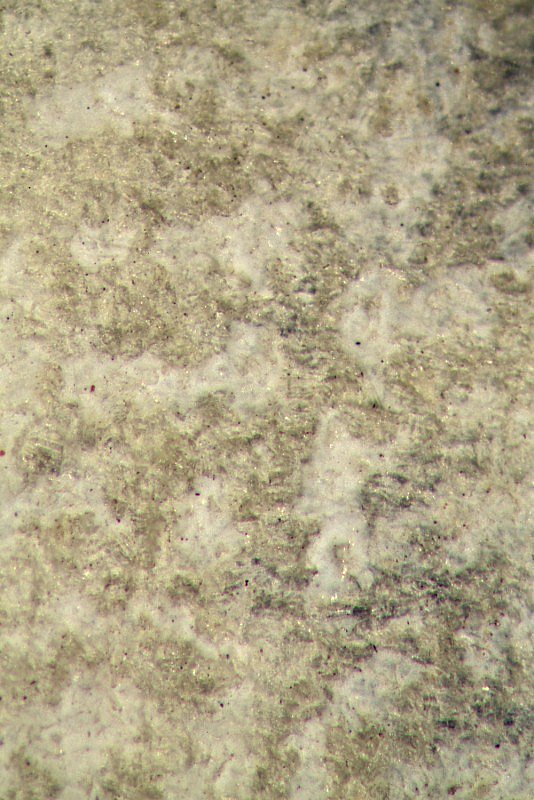Underdrawing
Artists' Techniques
The extensive underdrawing in brown ink which is revealed in the majority of the illuminations, both through thinly laid colours or paint losses and in the near-infrared images, is crucial in distinguishing between the three main artists.
A substantial amount of underdrawing and frequent changes of mind at the painting stage are typical of the Giac Master and the two assistants who painted large miniatures.
The Rohan Master’s work is characterised by elaborate drawing of an idiosyncratic nature. Strings of curly loops resembling doodles and brushed over with a grey ink wash cascade down fabric folds or congregate into pools of drapery.
The Madonna Master instead painted both of his miniatures freehand: neither shows any underdrawing.


Madonna and Child in a Church (Five Joys of the Virgin)
The second full-page miniature painted by the Madonna Master, this image incorporates in its interior a design of the Limbourg brothers which was in the collection of Yolande of Aragon’s son, René of Anjou, by the 1430s. The demure Madonna exudes dignified sophistication and gentle self-control, even though she seems to be propelled towards the viewer from the depth of the picture space. Rendered in soft grey charcoal over the bare parchment (hotspots 1 and 2), the Madonna appears to be either carved out of the page, a statue that has just come to life and miraculously stepped out of its niche, or conjured up by the imagination, a sublime vision in the mind’s eye of a devout viewer. Creating tension between the materiality and spirituality of the image, the Madonna Master’s consummate technical skill is made ever more impressive by the economy of his materials.
In addition to the ultramarine blue, vermilion red, malachite green, organic pink, lead white and gold he used to paint the Apocalyptic Virgin, here the Madonna Master also employed silver to paint small details in the background, as well as an organic colourant for the muted green architectural interior. The skilful and subtle modelling of flesh tones and draperies, the sophistication of the Madonna, as well as the seamless integration of architecture and storytelling, all single him out as the most talented artist in the Hours of Isabella Stuart.
